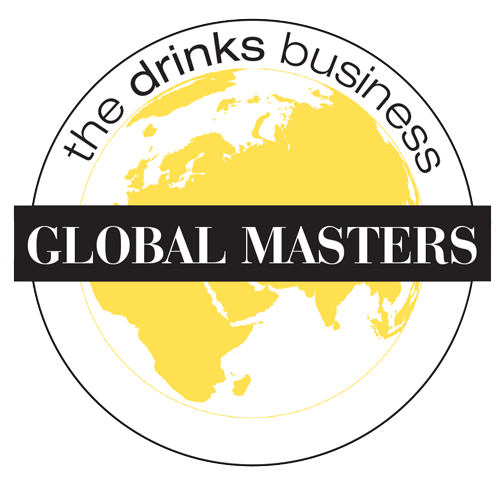Global Rosé Masters 2018: the results
Fabulous wines
 “What was exciting was when we saw something a little bit different,” said judge Tim Jackson MW, speaking of Alpha Estate’s entry. “It has a certain Nebbiolo character, but in its own style, as it should be. There are some fabulous wines being made in Greece, if you know where to look, and if they get out of the country. Xinomavro can be an exceptional grape variety. I was very pleasantly happy, not surprised, that it was a Greek wine, because it is an endorsement of what we know is going on in Greece.”
“What was exciting was when we saw something a little bit different,” said judge Tim Jackson MW, speaking of Alpha Estate’s entry. “It has a certain Nebbiolo character, but in its own style, as it should be. There are some fabulous wines being made in Greece, if you know where to look, and if they get out of the country. Xinomavro can be an exceptional grape variety. I was very pleasantly happy, not surprised, that it was a Greek wine, because it is an endorsement of what we know is going on in Greece.”
Other highlights in this category included Provence’s By Ott Rosé from Domaines Ott, Famille Sumeire’s Château Coussin, also from Provence, and rocker Jon Bon Jovi’s inaugural rosé, made in collaboration with Languedoc winemaker Gérard Bertrand, Diving into Hampton Water – all of which received Gold medals.
In the £20-£30 category, Italy, one of the world’s biggest producers of rosé, showed its prowess, with RosaMara from Costaripa in Lombardy and Scallinera Etna Rosato from Tenute Piccini SPA in Sicily representing ‘the boot’ and taking home a Gold medal each. It was at this level that we saw the only Australian Gold – La Boheme Act 2 Dry Pinot Rosé, from De Bortoli. Sacha Lichine’s Rock Angel Château d’Esclans and César à Sumeire l’Afrique, both from Provence, also won a Gold.
It wasn’t until we moved into the highest price categories that we saw our next two Masters; one from Provence, the other from the Languedoc. At this level, judges were presented with wines that more readily made use of oak, with producers making a conscious effort to coax a more unusual array of aromas and flavours from their fruit, far beyond fresh berries, with savoury notes of thyme, rosemary, rhubarb and orange blossom appearing.
Domaines Sacha Lichine’s Les Clans, the sister wine to its flagship Garrus, impressed, receiving a Gold medal in the £30-£50 category. However, it was Gérard Bertrand’s Château la Sauvageonne La Villa, a relative newcomer, having been launched last year, that won the hearts of our judges, and a Master medal. Produced from a high-altitude vineyard in the Languedoc, this textured, barrel-aged rosé is made from a blend of Grenache, co-fermented with Vermentino and Viognier, and has emerged as a true contender to Sacha Lichine’s dominance of barrel-aged rosé, adding weight to this increasingly popular style.
Equally impressive, sitting at the top of the pricing tree at £50+, was Sacha Lichine’s Garrus from Château d’Esclans, arguably the driving force behind barrel-aged rosé, which also gained a Master.
Together, these wines prove that when wielded with precision and care, oak can bring a level of depth and complexity to rosé that is rarely, if ever, seen at the lower end of the price scale, presenting an enticing motive to trade up.
“The barrel-fermented and oak-aged rosés worked better than expected,” notes Gibson. “The subtle use of oak, allowing the wines to breathe and develop complexity rather than imparting new oak flavours, was particularly clear to taste in the Chateau d’Esclans wines, Les Clans and Garrus.”

The judges: (L-R) Patrick Schmitt MW; Jonny Gibson; Andrea Briccarello; Patricia Stefanowicz MW; Tim Jackson MW; Lauren Eads; Alistair Cooper MW; Nicola Thomson; Roberto Della Pietra; Tobias Gorn
Sparkling
Looking at the sparkling rosé category, which has become an increasing focus for producers, there were several stand-outs, demonstrating a consistency of quality that was not as readily witnessed in the still wines. Indeed, our final two Masters were awarded to Champagne Perrier-Jouët’s Blason Rosé and English wine estate Hattingley Valley’s non-vintage rosé.
“Most consistent were the sparkling rosés,” said Stefanowicz. “Even at lower price points, the wines were packed with red berry flavours framed by racy acidity, appropriate gentle yeast notes and well-integrated dosage.”
While several of the big Champagne houses performed strongly, with a clutch of Gold medals awarded to the likes of Louis Roederer, Champagne Comtes de Dampierre, Nicolas Feuilatte, Champagne J. de Telmont and Laurent-Perrier, it was cheering to see several English sparkling wines achieve high praise, living up to the growing hype. As well as Hattingley Valley’s NV Rosé, which gained a Master, English producers Bolney Wine Estate and Gusbourne both received a Gold for their sparkling rosés.
“A couple of the English sparkling wines we tasted were stunning, perfectly poised wines,” adds Stefanowicz, while fellow judge and sommelier Andrea Briccarello described England as the “stars of the show”.
A special mention goes to Italy’s Zonin 1821, which scored a Gold for its Rosato Brut from Puglia, showing that Italian fizz can battle with the best of them, and at £10-£15 offers excellent value.
If this year’s competition proved anything, it’s that rosé is far from simply a light-hearted sip made for drinking without thinking, but a serious wine capable of complexity. But as Stefanowicz concludes: “Rosé wines are about beauty and delight and pleasure, like a French Impressionist painting.”
Far from style over substance, the finest wines are those that deliver on both fronts, and don’t flout their colour as a means of raising their retail value. Provence may be the watch word in rosé, and deserving of many accolades, but there are many pretenders to its throne, who are presenting wines that are not only of comparable quality and class, but are half the price.
